コラム
落合憲弘
John Sypal
タカザワケンジ
なぎら健壱

On a hot, humid August afternoon I stopped by Gallery Niepce in Shinjuku and enjoyed Eiji Ishikawa’s “Stolen Time”- an exhibition of new photos printed in a darkroom on expired photo paper.
While his film and pictures are new, the yellowed tones and hazy aberrations seen in his work are the result of a combination of his vintage TLR, a Ricohflex Dia from the 1950s.
The prints were matted and framed in a traditional manner, with Niepce’s peg-board walls making a cozy, sort of humble presentation space. At first glance, one might now know what exactly the work was- not What, perhaps, but When.
Let’s go back to the beginning. I entered the gallery knowing nothing. First glance, there was little within the pictures that could date the images. Generally, automobiles obviously help viewers figure out possibilities for the When of a picture, but Ishikawa doesn’t seem to find cars photographically interesting. His subject matter was more of beaches, and bushes, stone stairs, and children- things which aren’t easily be pinned down by time in a monochrome photograph. With the title of “Stolen Time”, I assumed that these were either vintage prints or, peering closer, new prints of anonymous, antique negatives. I was close!
Ishikawa told me that they were new (contemporary) pictures shot on fresh film and printed in the darkroom on long-expired photo paper.
Ishikawa finds his unopened boxes of photo paper online. He told me that some of the prints in the show were done on Mitsubishi Gekko paper which had an expiration date of 1978. This paper- as with all yet-unopened boxes still out there, has experienced degradation through (at the very least) annual cycles of heat and cold and humidity. Over time, these natural forces alter the paper’s sensitivity and likewise, how an image will appear on it.
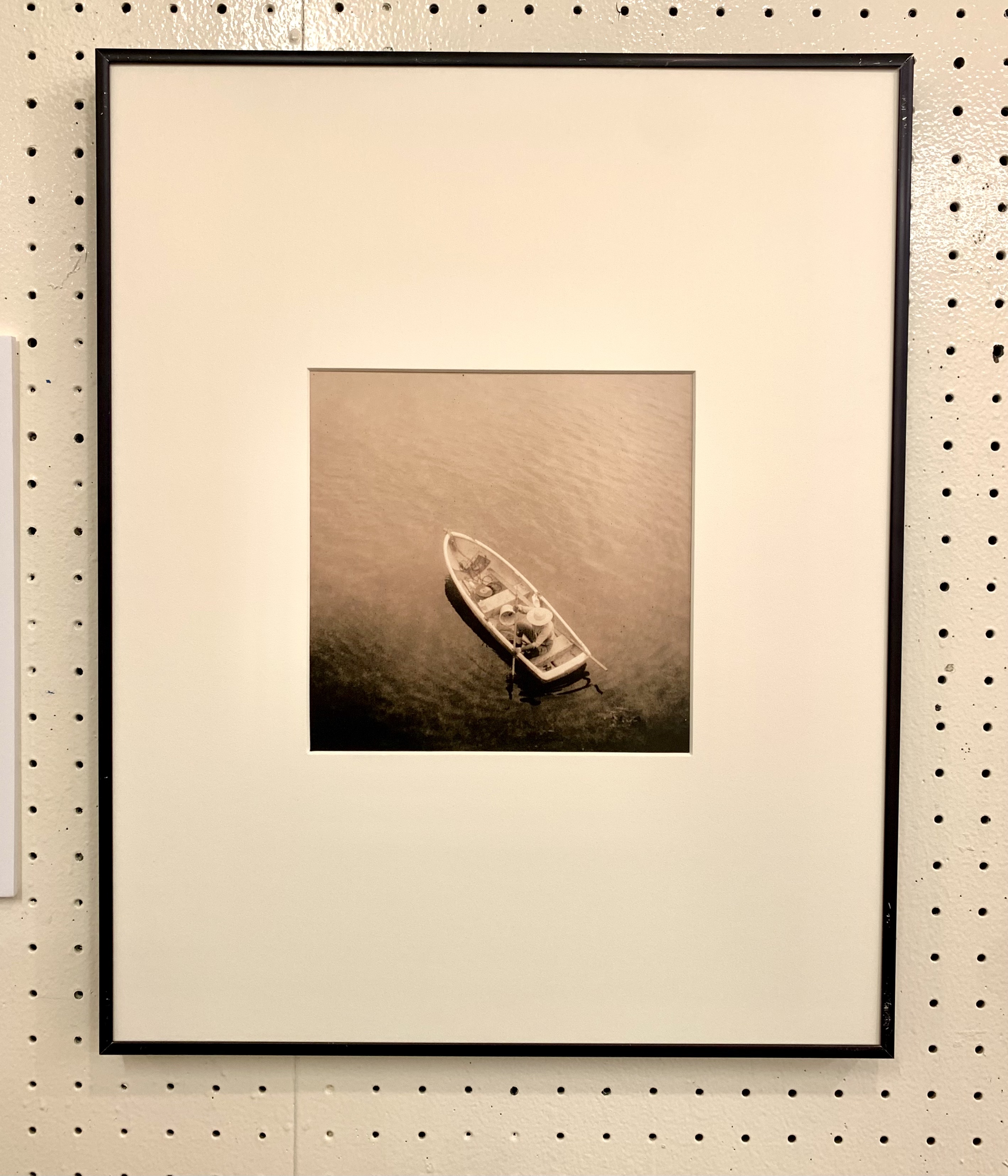
Through such paper Ishikawa’s images present a world blanketed in a mottled, low-contrast, rusty-yellow haze. That they call back to photography’s beginnings (in a gallery called Niepce, of all places!) is perhaps a comment on Ishikawa’s own respect for medium and the value nostalgia helps in figuring out one’s existence in the flow of time.
There’s no time like the present, but his new pictures look “old”. Of course, nothing says “old-fashioned” like the warm tones of yellowed paper- but I feel that these pictures are more than just an attempt to assert artistic value though some kind of pre-meditated, manufactured nostalgia.
It doesn’t take a leap of intelligence to know that similar results could be accomplished with a modern digital camera and minimal effort in photoshop. Sure, an “antique” look is easy to do- and, after perusing any online photo sharing site, you can see it certainly is done all the time. Digital Photography offers the “freedom” of being able to adjust anything in an image, right down to each individual pixel. Finally! You can do anything. Such capabilities, and a general sense that Photographic Art ought to be punchy and not plain, or at least look Arty, help market cameras and software. The promises of such Digital Artistic Freedom are vast- yet with such overwhelming choice, the final product is dependent on the genius- or limits- of each individual’s understanding. Taking this into account, despite creating near-infinite editing options in the first place, software engineers have made things easier. Now we’ve got downloadable presets and algorithmic filters that can be applied to any image with a simple tap of a screen- A magic wand instantly gives us predictable, perfect tones all for less than the price of a full thought.
Is this a problem? Personally, while I sometimes feel a sense of hollowness towards it in some ways, it’s not a big deal. Editing software makes people happy and there’s enough photography for everyone. If you value the responses people have for the agreed-upon look of old things- the “vibes” I guess- then sure, make any digital capture look “retro”.
But this sense of practicality somehow seems odd. And yet, despite a general human inclination to be impressed by things made from excessive effort, said effort doesn’t necessarily make a photograph more inherently worthy of artistic contemplation. (This is different for say, marble sculpture, cathedral architecture, or juggling.)
And yet…
I still find myself drawn to Ishikawa’s naturally yellowy prints more than a hypothetical version of identically-composed, digitally-captured, photo-shopped and inkjet-printed pictures. Why is this?
As a fellow film / darkroom guy, I understand what it means to get something from the process. Sure, this analog approach takes effort and, increasingly, money. But it’s not simply effort here which I find interesting. (Darkrooming is easier than most people think.) The more that I think about it, what came through the images for me most was his slightly fatalistic, near religious belief in the mystical qualities of expired paper and sixty-year-old TLR lenses.
Mystical qualities?
Ok, bear with me.
Certainly, the science and engineering which gave humanity photo paper and optical lenses was not due to a slap-dash approach of hope and guesswork and prayer. (For their time, such things took as much brains and effort to produce as the stuff computer engineers do now.) As I said before, photographic paper is perishable- and pushing it beyond the manufacturer’s suggested timeframe takes the artist into a new, unpredictable territory. It’s almost like you’re gambling to see what will happen- - how much you can get away with. And, at the same time, this lack of control teaches you something. A photograph is taken as a reaction or recognition or celebration to a moment. When captured on film and held as a latent image, after some time, it is made to appear. The stakes are low but the return can be high. I’m sure that Ishikawa has had dead batches of paper. Unresponsive silver. Such is Darkroom Animism. But that’s part of the game. How different it is to adjusting sliders on a monitor to make what you’re so sure you think you want.
It’s more like life itself- you’ve come this far and have a pretty good idea what might happen- and yet. . . this old paper, affected by the flow of time, shows you what it might be about. Instant nostalgia. In this way, Ishikawa’s silver gelatin sheets of “stolen” time can be seen as a byproduct of his curiosity and photographic education.
From his exhibition statement:
In the corner of my room sat a roll of exposed film that I had forgotten all about. After finally developing it I hold it up to the light, checking the negatives. Sometimes I remember when I pressed the shutter- other times I completely forget. Each frame is a scene of time that I’ve snatched with my camera. Realizing this, I feel that photography is about those moments of time stolen at that moment on that day.
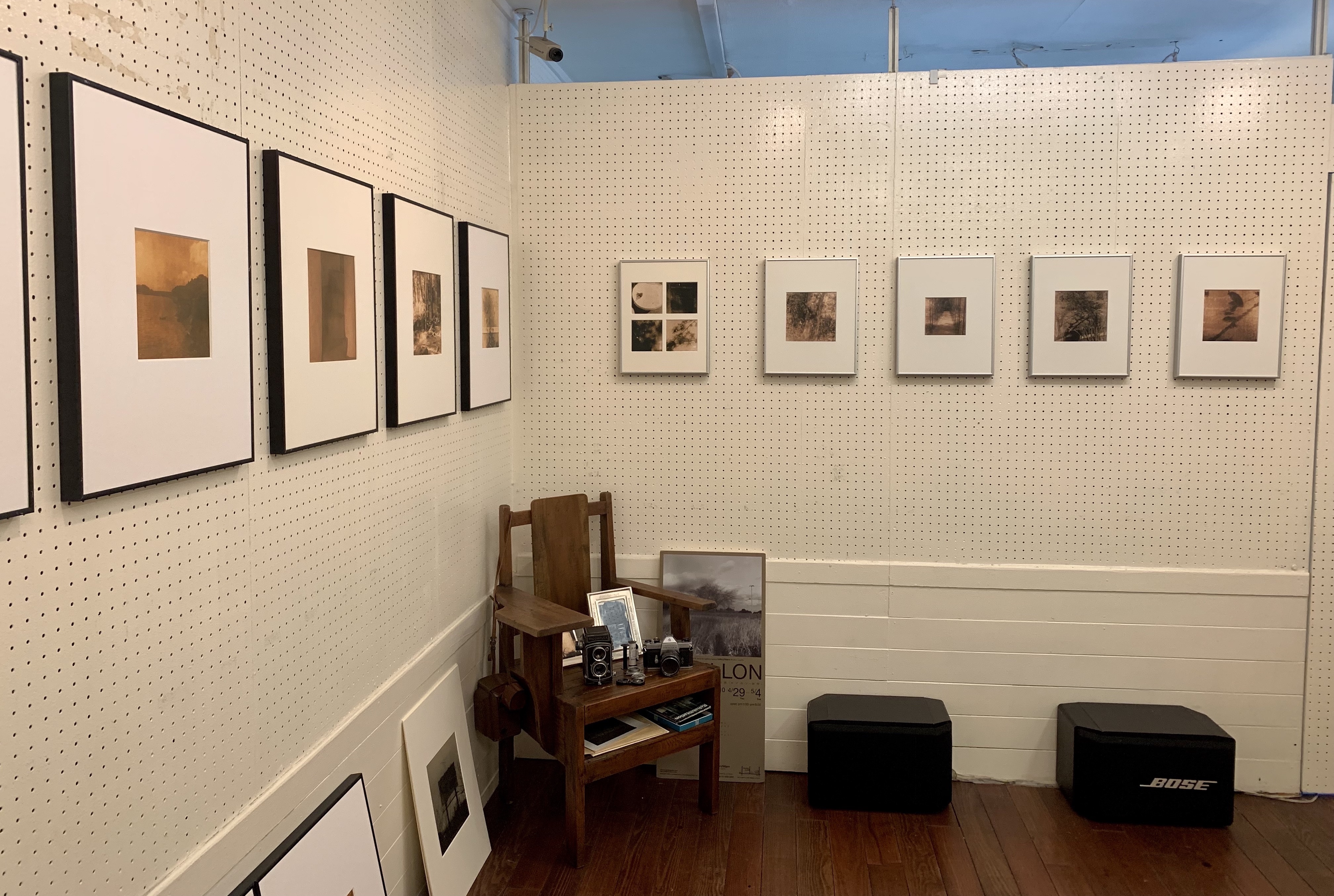
蒸し暑い8月の午後、新宿のGallery Niepce(ギャラリーニエプス)へ、石川栄二さんの「Stolen Time」を見に行きました。フィルム好きの私としては、暗室で期限切れの写真印画紙にプリントした新作写真を見て、いろいろ考えさせられました。
さて私は、何も知らずにギャラリーに入りました。プリントは伝統的な方法でマットとフレームに収められ、ギャラリーニエプスのペグボードの壁が居心地の良い、ある意味質素な展示空間となっていました。一見して、写真の中に年代を特定できるようなものはほとんどありません。例えば写真に写っている自動車を見れば、大体いつその写真が撮られたのかがわかるのですが、石川さんの写真に自動車は写っていません。彼の被写体は、浜辺や茂み、石段や子供たちなど、モノクロームの写真では時間軸を特定しにくいものばかりです。
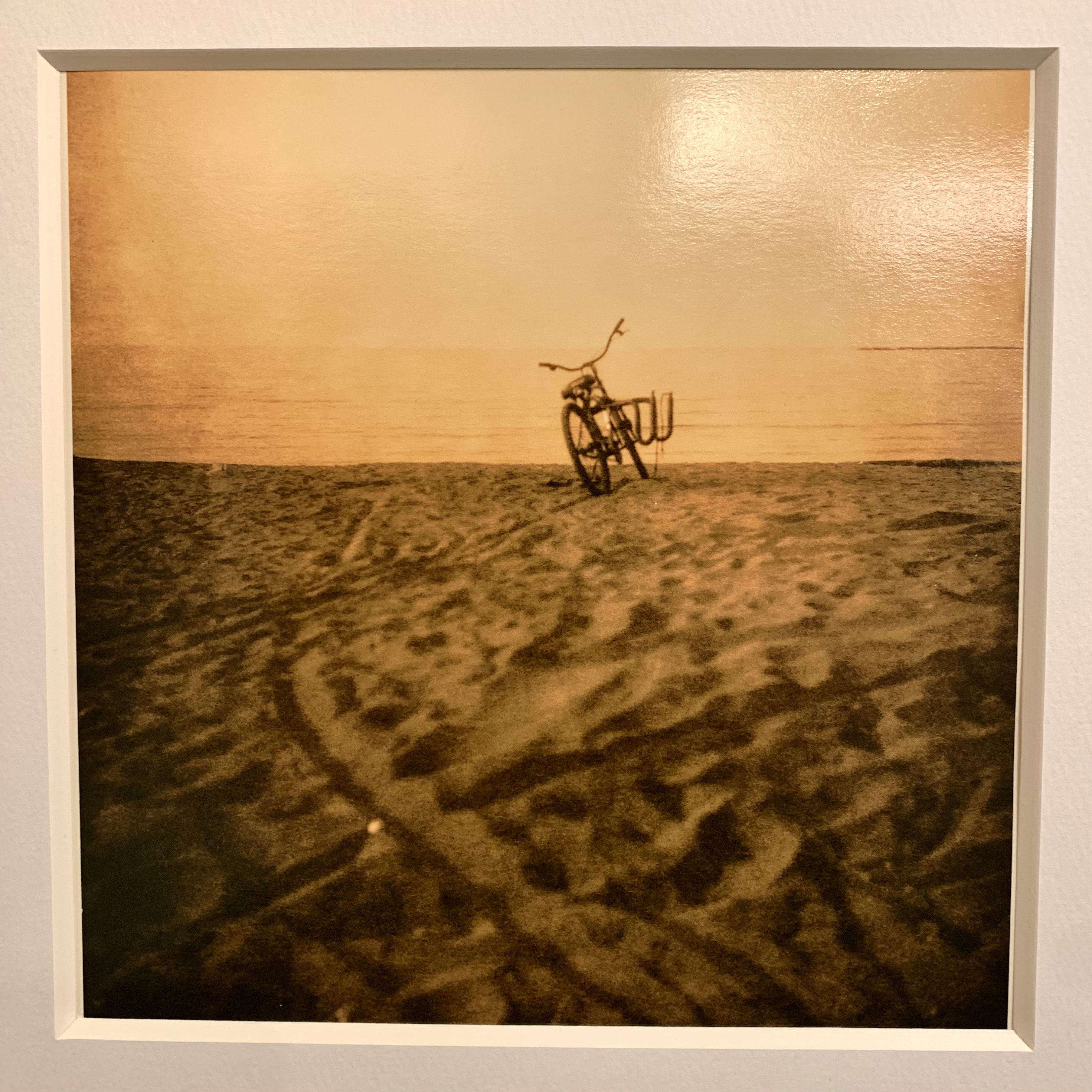

「Stolen Time」というタイトルから、ヴィンテージプリントか、アンティークネガをニュープリントしたものかと思いました。けれども、これは新しいフィルムで撮影し、暗室で使用期限の切れた写真用紙にプリントした、新しい現代の写真です。新しいフィルムを使いながらも黄ばんだ色調や霞んだ石川さんの作品は、1950年代のヴィンテージTLRとRicohflex Diaとの組み合わせによるものだそうです。
石川さんは、未開封の写真用紙の箱をメルカリで見つけてきます(私もです)。
この写真展のプリントのいくつかは、使用期限が1978年、三菱の「月光」という印画紙を使ったのだと教えてくれました。この古い印画紙は、少なくとも暑さと寒さと湿度の年輪によって劣化しています。このような自然の力が紙の感度を変え、イメージの見え方を変えていくのです。

石川さんはこのような印画紙を通して、コントラストが低く、錆びたような黄色い霞に覆われた世界を表現しています。 それは、石川さん自身が写真というメディアを尊重し、時間の流れの中で自分の存在を確認するためにノスタルジアを大切にする姿勢の表れなのかもしれません。
石川さんの新しい写真を「古い」と感じるということは、どういう意味でしょう。もちろん、黄ばんだ紙の温かみのある色調ほど「古さ」を感じさせるものはありませんが、これらの写真は、あらかじめ作られたノスタルジーによって芸術的価値を主張しようとしているのではない気がするのです。
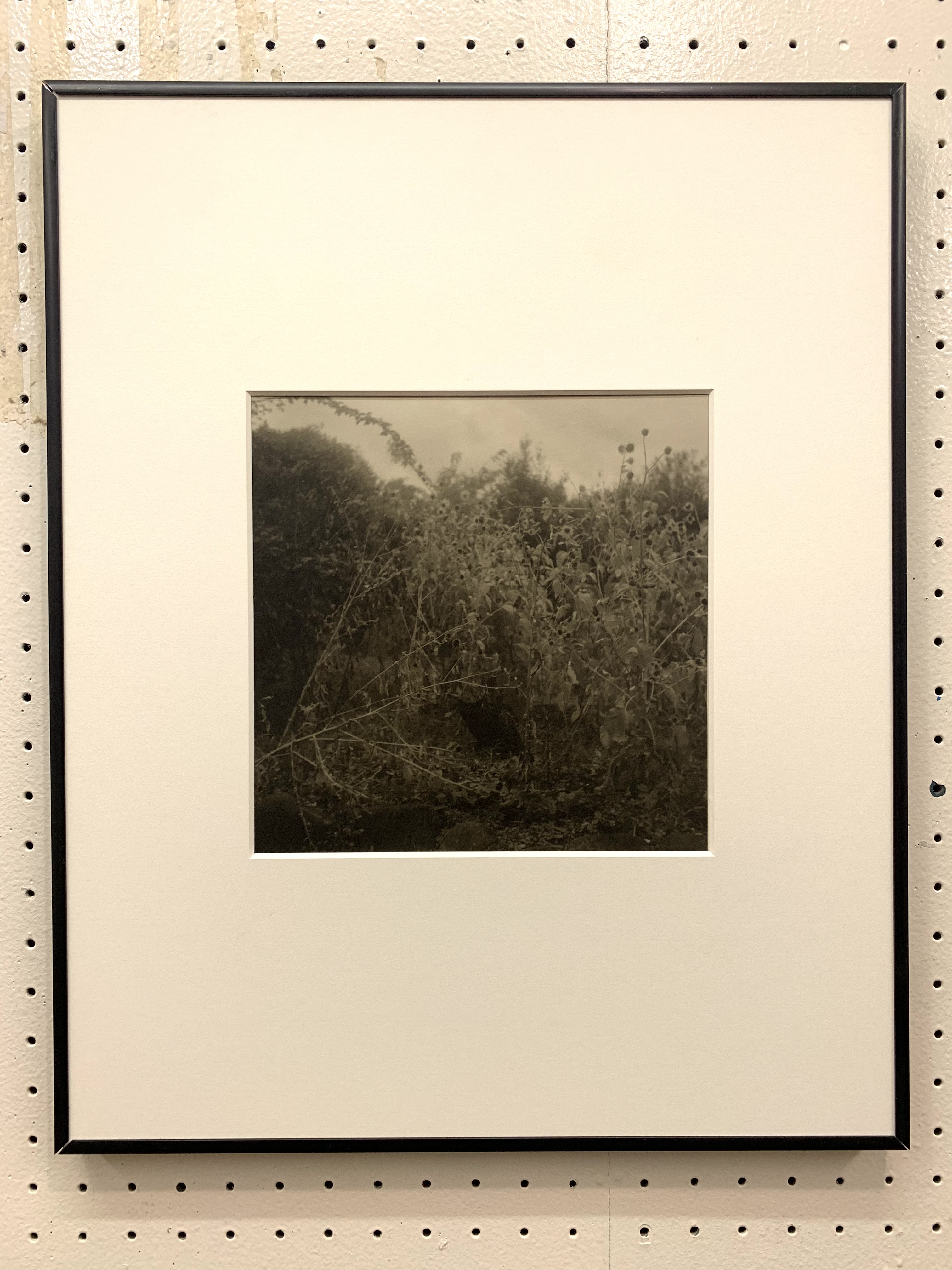
デジタルカメラやフォトショップがあれば、同じように見えるイメージは簡単に作ることができます。 確かに、アンティーク調にするのは簡単だし、ネットの写真共有サイトを見ていても、よくあることです。デジタル写真には、ピクセルのひとつひとつまで調整できる「自由さ」があるのです。
「何でもできる!」というこのような性能と、写真芸術はパンチが効いていて地味であってはならない、少なくともアーティスティックでなければならないという一般的な感覚が、カメラやソフトウェアの販売に役立っているのです。
このようにデジタルアートの自由度は高いのですが、選択肢が多すぎるため、最終的には各人の天才的な理解力、あるいは限界に左右されることになります。 それを踏まえて、無限に近い編集の選択肢を作りながらも、ソフトウェア技術者はそれを容易にしてきました。どんな画像にも、画面をタップするだけで適用できるプリセットやアルゴリズムフィルターがダウンロードできるようになりました。
これは問題なのでしょうか? 個人的にはある意味ホロリとさせられることもありますが、大した問題ではないのでしょう。 流行っている使いやすい編集ソフトは人を喜ばせています。古いものが持つ「雰囲気」みたいなものをエンジョイしたい人は、デジタルで撮ったもので「レトロ」なヴァイブスを見せればいいのです。
でも、この実用性というのは、なんだか変な感じです。また一般的に人間は、過剰な努力で作られたものに感動する傾向がありますが、その努力が必ずしも写真を芸術的考察に値するものにするわけではありません(大理石の彫刻や大聖堂の建築、ジャグリング、円周率の暗記などは別です)。
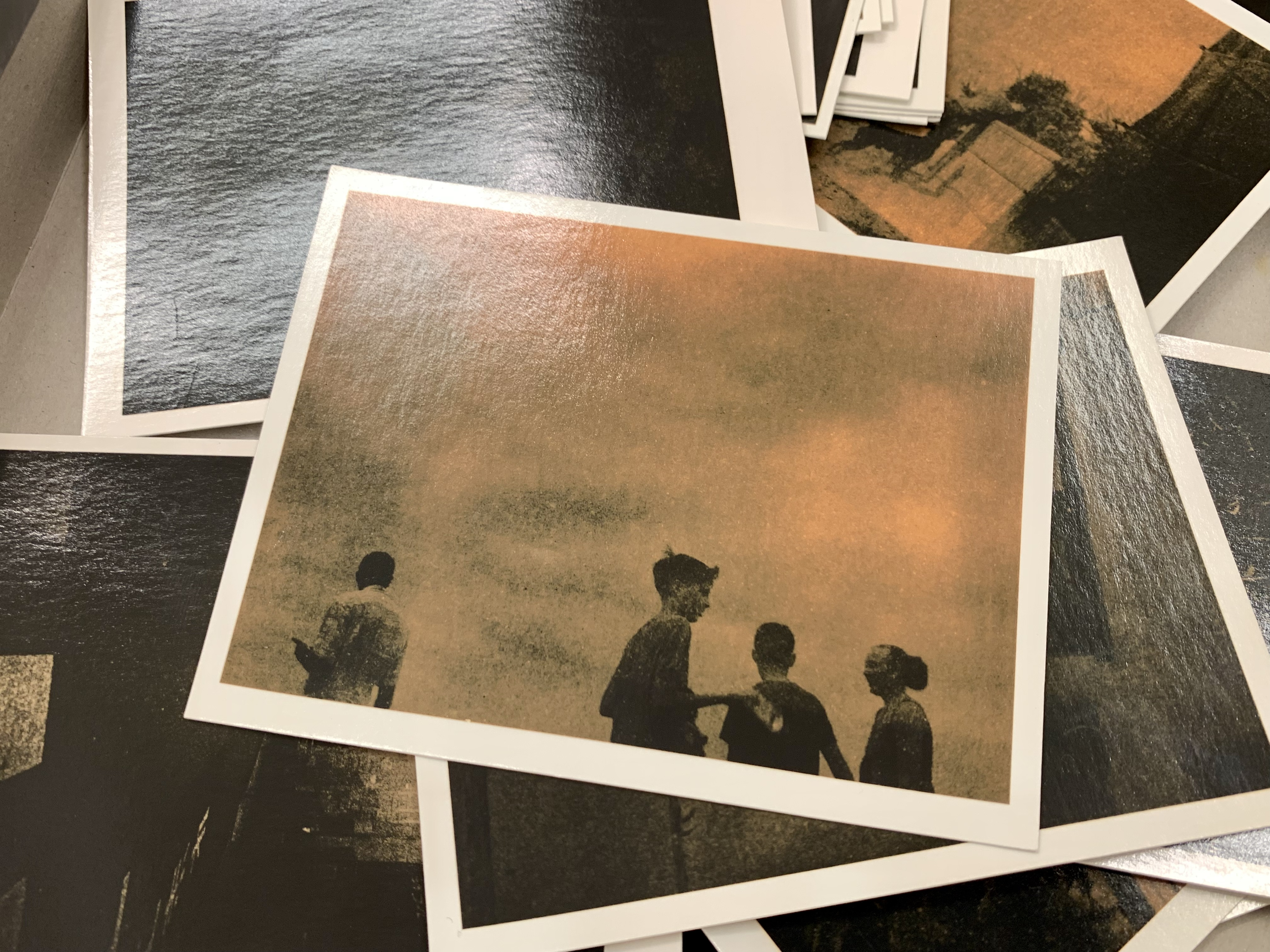
でも...
同じように構成され、デジタルで撮影され、フォトショップで加工され、インクジェットプリントされた写真の仮想版よりも、石川さんの自然に黄色くなったプリントに今でも惹かれるのは、なぜなのでしょう?
フィルム&暗室派のワタシにとっては、フィルム写真のプロセスから何かを得るということがどういうことなのかを理解できます。 確かにこのアナログなアプローチは労力とお金がかかります。 しかしここで私が面白いと思うのは、単に努力だけではないのです(暗室作業は意外と簡単なのです)。そう考えれば考えるほど、私が最もイメージから得たものは、期限切れの紙と60年前のTLRレンズの神秘的な性質に対する、彼の少し宿命的で宗教に近い信仰心でした。
神秘的な資質?
確かに、人類に写真用紙や光学レンズをもたらした科学と光学は、希望と推測と祈りによる安直なアプローチによるものではありませんでした。当時は、今のコンピューター技術者と同じように、頭脳と労力が必要だったのです。先ほども言いましたが、印画紙は腐りやすいので、メーカーが指定する期限を越えると作家は予測不可能な新しい領域に入っていくことになります。それはまるで、何が起こるか、どれだけ逃げられるかというギャンブルのようなものです。そして同時に、このコントロールの無さが何かを教えてくれるのではないでしょうか。
写真は、ある瞬間に対する反応、認識、祝福として撮られるものです。フィルムに収められ、潜在的なイメージとして保持されると、しばらくして、それが現れるようになります。賭け金は低いですが、見返りは大きい。石川さんもこれまでに使えない印画紙があったはずです(メルカリはそういうこともある…)。
印画紙で勝負。印画紙を信用。そんな暗室アニミズム、すごいですね。
モニター上のスライダーを調整して、自分の思うようなものを作るのとは、どれほど違うことか。
ここまで来て、何が起こるか大体わかっているのに。この古紙は、時間の流れに影響されながら、それが何であるかを教えてくれるのです。一瞬のノスタルジー。このように、石川さんが「盗まれた」時間を記録したシルバー・ゼラチン・一枚一枚の紙は、彼の好奇心と写真教育の副産物として見ることができるのです。
- 本人のステートメントより:
- ずいぶん前に撮影され忘れられたフィルムが部屋の隅で出番を待っている。ついに現像されたフィルムのネガをライト越しに覗き込む。シャッターを押した時のことを覚えてたり忘れていたり。それらのどの景色もカメラを介してかっさらってきた時間なんだよな。と思え、写真とはある日どこかで盗んできた時間のことである、と言ってもいい気がした。
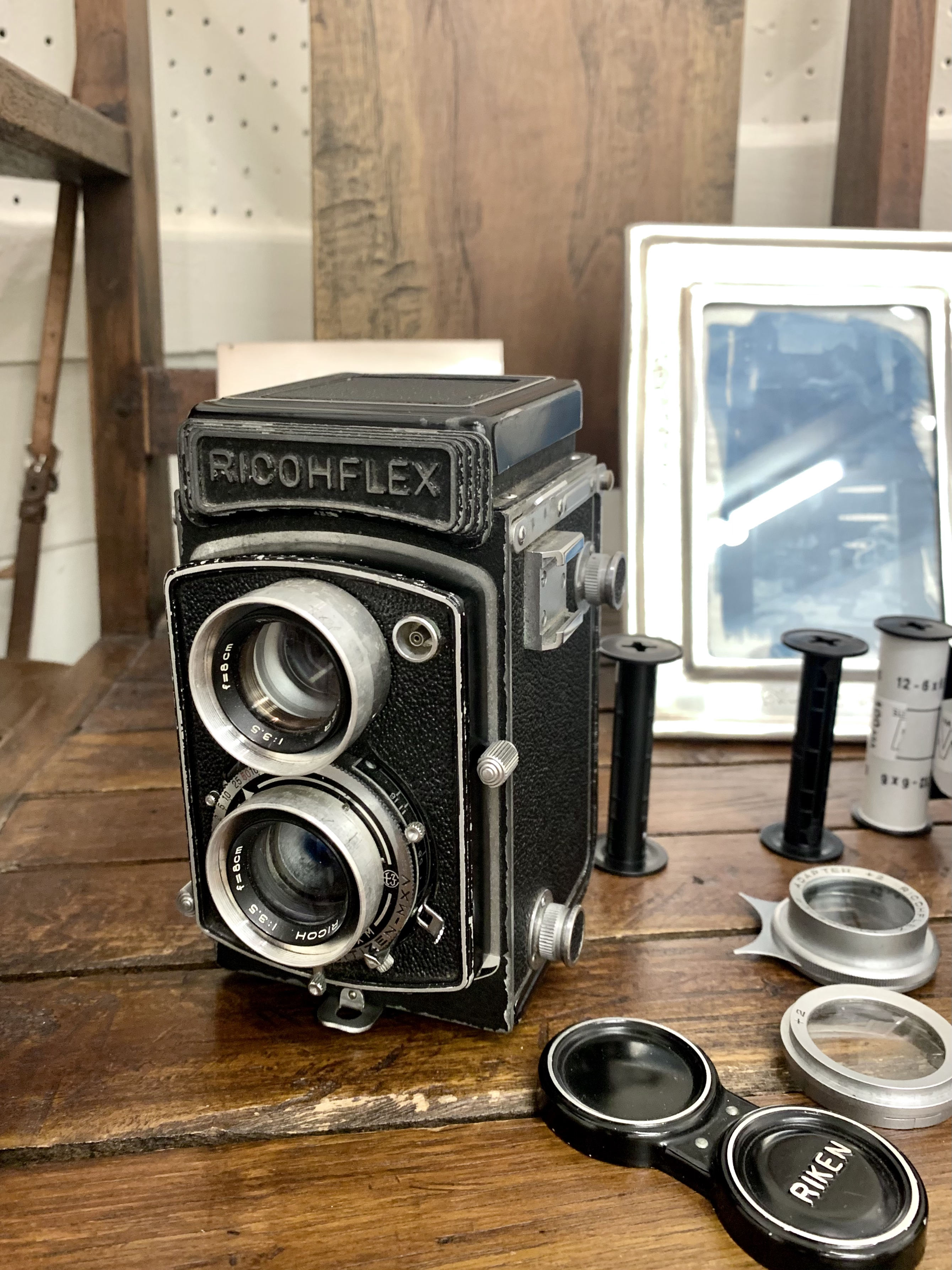
石川栄二「stolen time」
会期:2022年8月11日(木)~8月14日(日)
13時〜19時
 Vol.41 中嶋琉平|Ryuhei Nakashima「Asia, New York, and Tokyo」、高地二郎|Jiro Kochi「GINZA: Through the eye of a Salaryman 1950-1990」
2025/11/08
Vol.41 中嶋琉平|Ryuhei Nakashima「Asia, New York, and Tokyo」、高地二郎|Jiro Kochi「GINZA: Through the eye of a Salaryman 1950-1990」
2025/11/08
 Vol.40 藤岡亜弥|Aya Fujioka「Life Studies」、荒木塁|Lui Araki 「Color/Scape」
2025/10/03
Vol.40 藤岡亜弥|Aya Fujioka「Life Studies」、荒木塁|Lui Araki 「Color/Scape」
2025/10/03
 Vol.39 榎本八千代|Yachio Enomoto「家族写真 / Family Photo」
2025/09/05
Vol.39 榎本八千代|Yachio Enomoto「家族写真 / Family Photo」
2025/09/05
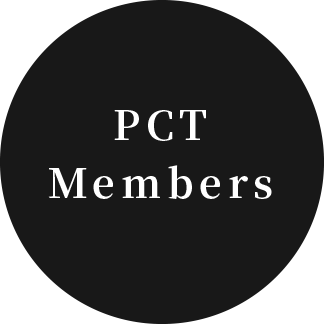
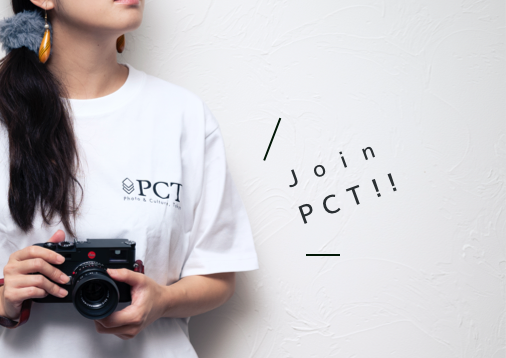
PCT Membersは、Photo & Culture, Tokyoのウェブ会員制度です。
ご登録いただくと、最新の記事更新情報・ニュースをメールマガジンでお届け、また会員限定の読者プレゼントなども実施します。
今後はさらにサービスの拡充をはかり、より魅力的でお得な内容をご提供していく予定です。
 「Photo & Culture, Tokyo」最新の更新情報や、ニュースなどをお届けメールマガジンのお届け
「Photo & Culture, Tokyo」最新の更新情報や、ニュースなどをお届けメールマガジンのお届け 書籍、写真グッズなど会員限定の読者プレゼントを実施会員限定プレゼント
書籍、写真グッズなど会員限定の読者プレゼントを実施会員限定プレゼント